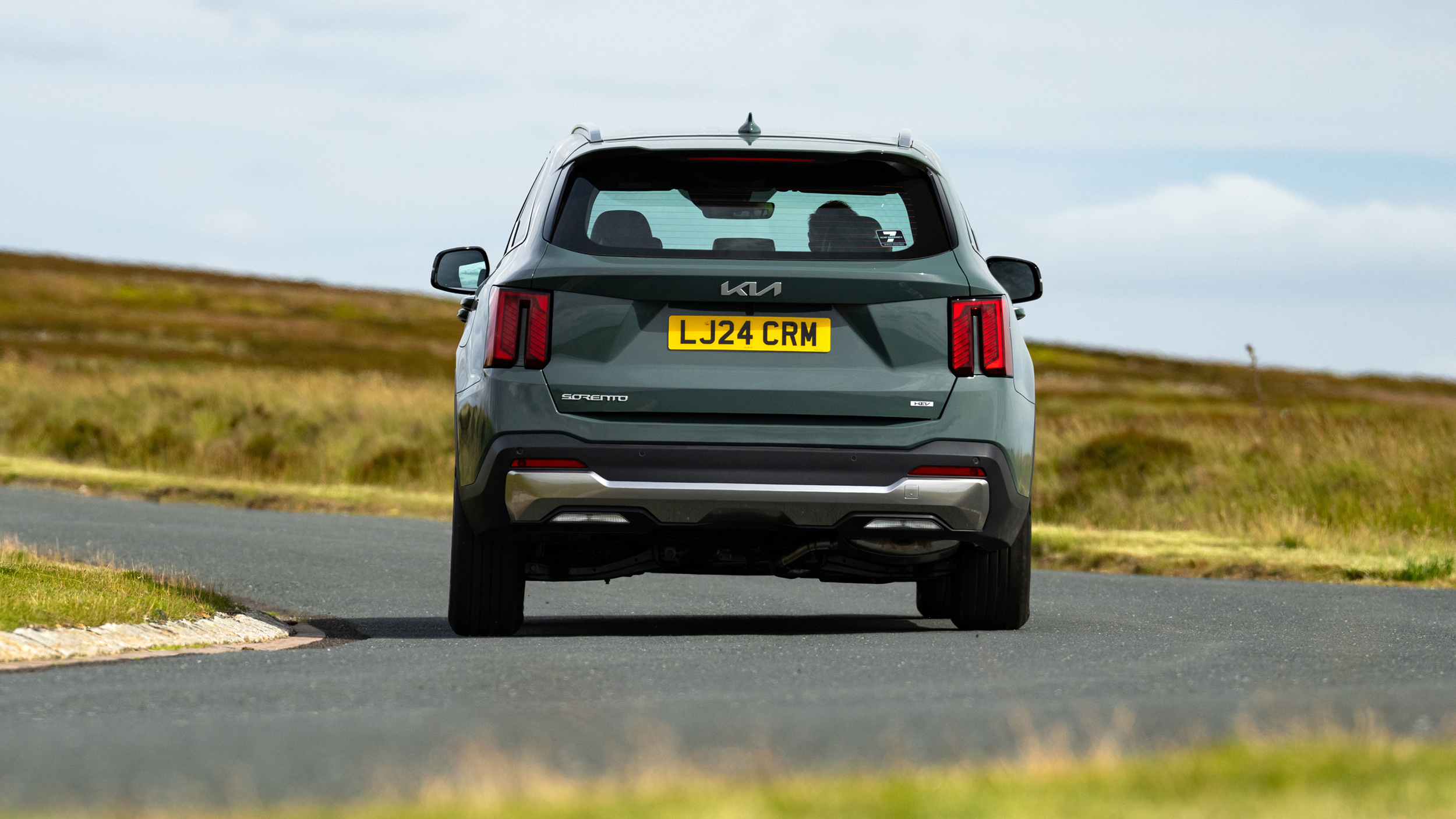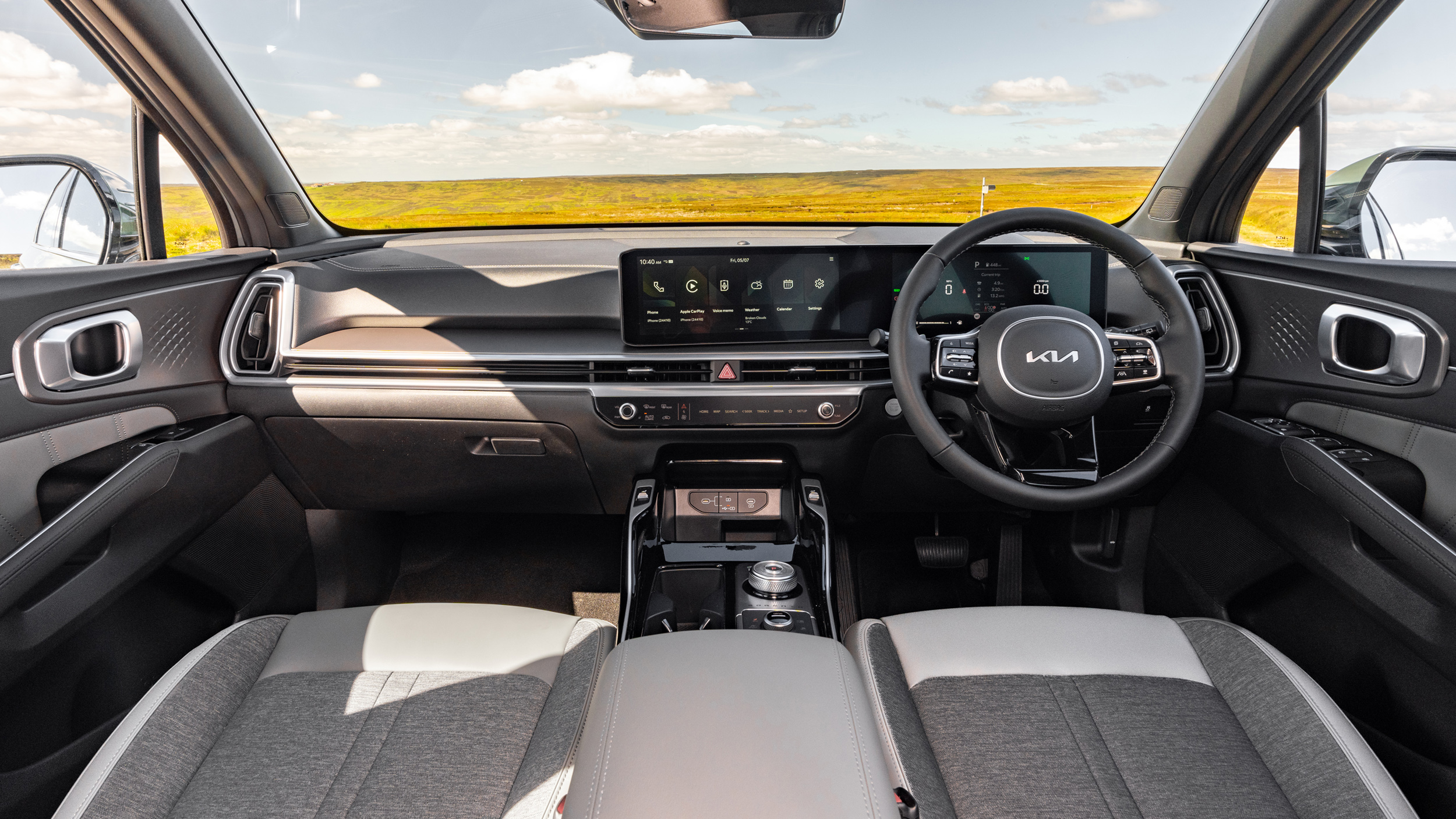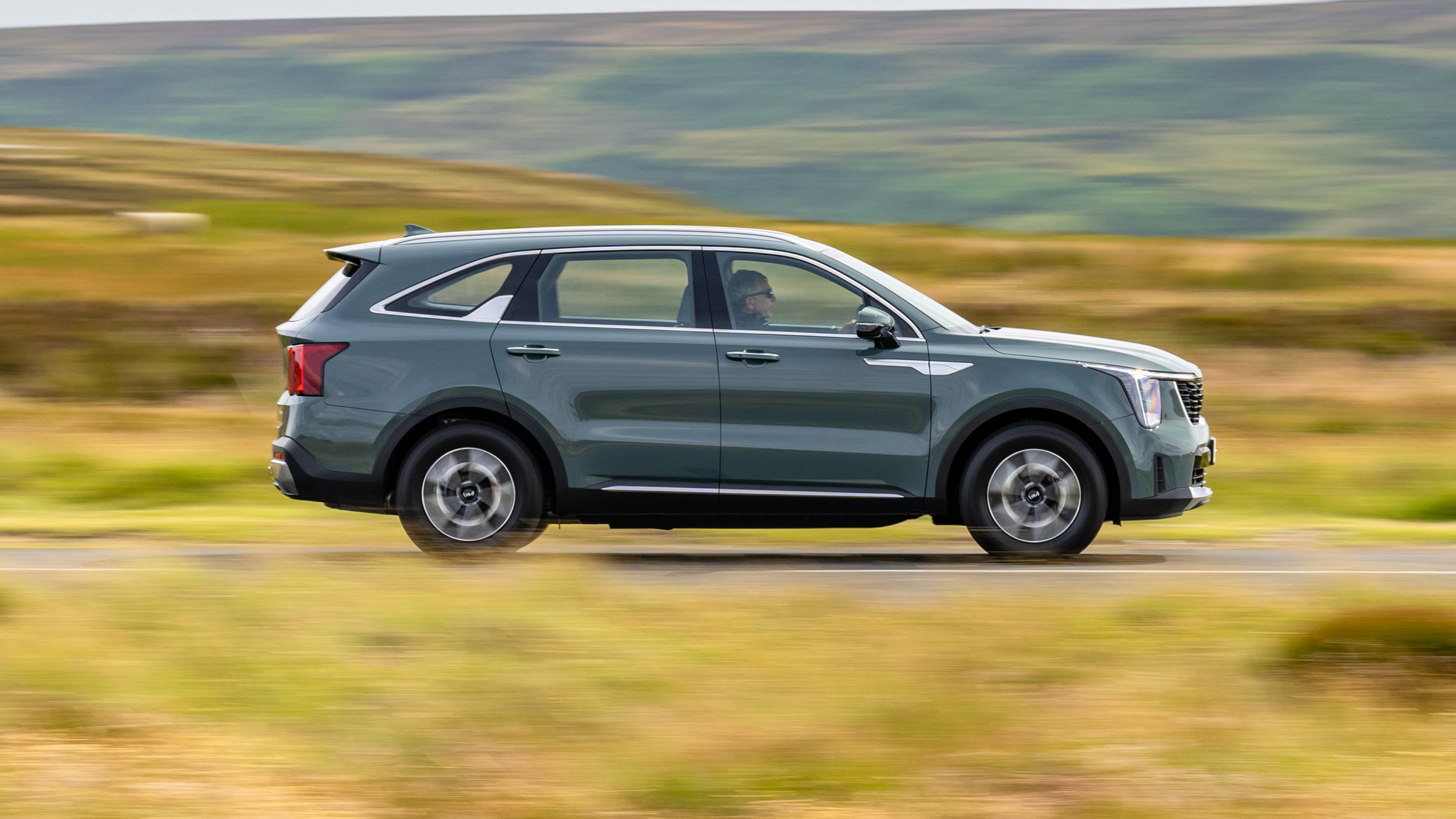
Interior
What is it like on the inside?
In short, lovely. First up, there are decent finishes everywhere, and it feels nicely built. Different sizes of people can get comfortable in the driver’s seat (especially the swankier electrically adjustable ones), and the 12.3in multimedia display works well, is clear and well sorted.
Does it feel cheap?
You'd hope not, because the Sorento isn't a cheap car and Kia isn't the bog standard budget brand it once was. The Sorento's upgraded cabin looks smart and is a definite improvement on the previous version, but it definitely doesn't have that intangible premium vibe you get in a posher German car. It's a workmanlike family hauler, but at least that means you don't have to worry too much.
So it's practical then?
You'd hope so, it's the Sorento's main USP. The seven seats are standard - and include that middle row that slides, reclines and splits 60:40 - while the back two seats fold flat into the floor independently. Everyone gets a USB plug to charge their devices onboard, so that's neat. There’s a rear windscreen wiper, by the way, it’s just tucked up in the rear spoiler.
Our favourite toy is the 'intercom' system that plays the driver's voice in the back seats using the mic for phone calls (it's a long way back there to tell everyone off). Small details that work.
Though it doesn't have the biggest boot in the class, it's still impressive. The hybrid and diesel versions offer 179 litres of space with all the seats up, 813 litres with five seats up and 1,996 litres with them all folded down. The PHEV car only loses around four to six litres of space compared with the other versions though, which is decent considering cars like the Land Rover Discovery Sport can't do seven seats with a plug-in powertrain at all.
Featured

Trending this week
- Car Review
BMW iX3






